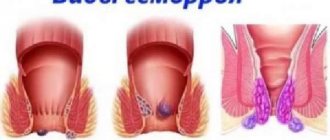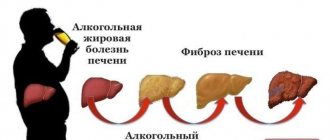The article talks about what to do if your stomach hurts after a cesarean section. Such phenomena as numbness and hardness of the abdomen are explained in detail.
Despite all the benefits of surgery, the thought of an ugly scar scares new mothers. Scars do not decorate a woman's body.
A cesarean section scar is no exception. But don’t let this scare you: over time, the mark from the operation will become less noticeable or will be hidden under pubic hair.
What should the belly look like after a caesarean section, photo
- The specificity of the operation is such that it is not easy to remove the scar. After all, absolutely all tissues of the peritoneum and uterine walls are cut
- The size of the incision should be such as to ensure the removal of the baby without damage
- But women who have had a delivery operation can be confident that no new scar will appear during subsequent births. The tissue will be cut strictly along the existing scar
How long will the stitch take to heal? This depends on several factors:
- from the cutting technique
- did the birth proceed quickly?
- were there any complications during labor?
Video: caesarean section
Seam along the white line
- In case of fetal hypoxia and severe bleeding, a decision is made to perform a corporal cesarean section.
- With inferomedian laparotomy, the incision is vertical. It runs along the linea alba 4 cm below the navel. The incision ends at a distance of 4 cm above the pubic area
- This classic laparotomy method provides good access to the female reproductive organs. In addition, it is possible to check the condition of the organs of the upper abdomen
- One of the unpleasant consequences of performing a below-median laparotomy is that the suture may change shape over time and become thicker due to the fact that it is constantly under tension
- In addition, the vertical seam does not look aesthetically pleasing and is noticeable under transparent clothing
Horizontal cut
- A skin incision in the transverse direction along the suprapubic fold is performed during Pfannestiel laparotomy. The peritoneum is not opened
- The incision after surgery heals faster and is hardly noticeable thanks to the applied cosmetic suture. Pfannestiel laparotomy is performed more often
- The transverse direction of the incision is also performed during Joel-Cohen laparotomy . It extends 3 cm below the midline under the navel to the pubic area
Reviews from women who have had a caesarean section
Natalya, 25 years old, economist, Moscow. I went for a caesarean section on my own, without any indication. The operation went very well, I was given spinal anesthesia, I saw and heard everything. There was no severe pain, there was discomfort and the milk came only on the third day. Now 3 months have passed since the operation, the stitch practically does not bother me, I followed all the instructions. In general, I don’t regret my decision one bit.
Olga, 28 years old, salesman, Voronezh. At the final gynecological examination, it turned out that I had a deformation of the pelvic bones. We decided to go for the operation, it went quickly. The anesthesia went well, I recovered from it for an hour and a half after the operation, and the child was born healthy. They brought me my daughter only on the 4th day, when I already felt almost healthy, could stand, walk, and even began to slowly breastfeed her. I survived all the problems, because the most important thing was that my daughter was completely healthy.
The rehabilitation period after cesarean section requires a lot of attention and effort. Because the woman’s future health and her ability to give birth again depend on how it goes. You should listen to all the doctor’s recommendations, don’t be shy to ask for help, don’t take on the entire burden of responsibility and responsibilities, and then everything will be fine.
Why does my stomach hurt after a cesarean section?
- Any surgical intervention that involves cutting the skin leads to tissue damage. The healing period is accompanied by pain
- The suture hurts after a cesarean for a month, in some cases for more than six months. Women in labor after a natural birth do not experience as much pain as after a cesarean section delivery.
- The postoperative period does not pass without pain and discomfort
- Under the influence of anesthesia, the woman does not experience any painful sensations. But after anesthesia, the woman experiences severe pain. Drug intervention does not always save
By the 14th day, the unpleasant consequences of childbirth bother the woman less. But she will continue to feel numbness, itching, and loss of sensitivity in the scar zone for a long time.
- The pain after a caesarean section can be very severe for some women. The intensity of pain is influenced by the pain threshold. It is also important whether a woman has a first or second cesarean operation. After the first delivery by cesarean section, the pain is more intense
- For the first 3-4 days, the stitch hurts especially badly, and then it subsides. The seam may remind you of itself with tingling sensations. After the bandage is removed, the woman experiences itching
- In addition to the usual pain, a woman may notice wet spots on her clothes. A slight discharge after removing the bandage should not cause panic or concern. Usually after 3 days the seam becomes dry
- One of the unpleasant problems is the accumulation of gases, as well as the inability to empty oneself. Both problems are caused by aggressive intervention, after which intestinal motility is disrupted. As a result, food movement slows down, which causes discomfort.
- Releasing gas will help relieve pain. A woman needs to lie on her left side and do not press her stomach too much. Enema and suppositories also help. In some cases, the enema has to be done within a week
- Pain is also felt from uterine contractions. It resembles menstrual pain. The hormone oxytocin, which is produced after childbirth, promotes active uterine contractions. This increases the pain
- Severe continuous pain signals the onset of inflammation of the inner walls of the uterus. Therefore, pain cannot be tolerated. By consulting a doctor as soon as possible, a woman will save herself from serious consequences
- The slightest movements cause severe pain in the first days after surgery. Coughing or taking deep breaths sometimes causes severe discomfort. But a woman in labor should not lie down all the time, afraid to move or cough. The more movement after surgery, the faster the body recovers. Therefore, there is only one piece of advice: be patient and move on.
- Pain in the shoulder area is associated with the accumulation of air in the diaphragm during surgery. Pain reliever will relieve discomfort
What complications can there be?
- A woman needs to listen to the nature of the pain. If complications arise, do not hesitate to call a doctor.
- Severe pain can occur with inflammation of the uterine cavity, as well as if the suture becomes inflamed or comes apart
- After an epidural or spinal anesthesia, you may experience a headache. There are frequent cases of bladder dysfunction. Back pain usually goes away without painkillers
Recovery after anesthesia
Nowadays, a woman can choose the type of anesthesia that will be used to numb her. However, doctors also pay attention to the following factors when choosing an anesthesia method:
- condition of a pregnant woman;
- fetal condition;
- planning of the operation;
- safety of drugs for mother and child;
- availability of a qualified specialist.
General
This method is most often used in emergency situations as it requires less time to administer. First, the woman is given a “preliminary anesthesia” intravenously. A tube is inserted into the trachea through which a mixture of oxygen and anesthetic gas is supplied, a drug is injected that relaxes the muscles and the uterus, after which the operation itself begins.
Indications for the use of general anesthesia:
- emergency section;
- with a transverse, oblique position of the fetus;
- refusal of regional anesthesia;
- with prolapse of the umbilical cord;
- if there are contraindications for epidural anesthesia.
There are practically no contraindications to general anesthesia, however, there are a number of complications or side effects:
- headache, dizziness;
- cough and sore throat from the tube;
- nausea, muscle pain;
- allergic reactions, respiratory tract infections.
General anesthesia has a greater effect on a child than epidural anesthesia:
- possible toxic effects on the brain, development of perinatal encephalopathy;
- lethargy, drowsiness.
Spinal
This method of anesthesia is used for planned surgery, but sometimes also for emergency surgery, if there are 10-15 minutes of time left. Spinal anesthesia has a number of advantages:
- the drugs used for this anesthesia do not affect the child;
- a small dose of anesthetic is administered, thereby reducing the risk of toxic poisoning if it accidentally enters the blood;
- the anesthetic acts very quickly, which is important, since when the medicine acts, the pressure in the woman’s lower body drops, which leads to oxygen starvation, which means the child needs to be delivered as quickly as possible;
- the muscles of the body completely relax;
- the risk of breathing problems decreases, since the woman is conscious;
- a woman immediately hears the first cry of her child and can put him to her breast.
But there are also disadvantages:
- there is a sharp drop in pressure due to which it is raised artificially before the operation, and since the pressure rises in the mother, it also increases in the child, which can subsequently negatively affect his nervous system;
- the dose of the medicine is one-time and cannot be changed, which indicates that if there are any complications that will increase the duration of the operation, the patient will also have to endure general anesthesia;
- possible manifestations of headaches.
For a child, the most important complication is oxygen starvation, which occurs as a result of a drop in pressure.
Epidural
An anesthetic substance is injected into the spinal canal, as a result of which the woman loses sensitivity in the lower part of the body, but her consciousness remains clear. This method is most often used during planned operations, when there is time for its preparation. In emergency situations, it is problematic to carry out such a procedure quickly.
Epidural anesthesia has contraindications:
- inflammation of the skin at the puncture sites;
- diseases of the spine;
- acute infectious diseases;
- bleeding disorders;
- allergies due to intolerance to anesthesia drugs;
- narrow pelvis and heavy weight in the child;
- in some cases, a scar on the uterus;
- oblique or transverse placement of the fetus.
It is also possible to develop side effects and complications, which are much more common due to the large dose of the drug. Their presence may depend on the skills of the anesthesiologist, but most often the following side effects occur:
- headache;
- trembling in the legs;
- backache.
The child may experience a decrease in heart rate, hypoxia and respiratory failure. But a competent pediatrician can very quickly cope with all these complications.
How long does your stomach hurt after a caesarean section?
- The suture heals within a week, after the formation of a skin scar. On days 5-7, the sutures are removed. If the seam is cosmetic, then it is sewn with self-absorbing threads. After 65-80 days, such threads are completely absorbed.
- The healing wound on the uterus and skin is very painful, so the woman in labor is injected intramuscularly with narcotic or non-narcotic analgesics. To prevent infectious complications, antibiotics are also prescribed.
- In the future, analgin with diphenhydramine or other anti-inflammatory non-steroidal drugs can cope with the pain syndrome. But they must be prescribed by a doctor, taking into account other prescriptions and the lactation period. Illiterate use of medications can have negative consequences for the baby.
- The length of the recovery period, as well as how much the suture will hurt, depends on the type of incision made by the surgeon. If the incision is longitudinal, the pain will last for 2 months. The transverse pain lasts for about 6 weeks, but the nagging sensation will bother the woman for about a year.
What to do to reduce pain?
- do not lift heavy objects (more than 2 kg) for a month or two after surgery
- use a postpartum bandage, putting it on immediately after waking up in the morning (the bandage fixes the uterus and soft tissues, preventing them from moving)
- avoid physical exertion and sudden movements
- If you have problems with the intestines, the pain only intensifies, so it is necessary to stop eating sweets, starchy foods, spicy foods, fatty foods, and legumes even before surgery.
- do a light self-massage of the abdomen, which will help activate intestinal activity
- move more
- Chamomile tea helps with uterine pain: pour a teaspoon of chamomile with a cup of boiling water and let it brew for an hour (you can drink chamomile tea 2-3 times a day without harm to the child)
- the seam must be treated with brilliant green, washed with soap and water, without a washcloth
Figure restoration
To return your figure to its previous state, it is first of all important to improve your diet. Since physical activity is allowed only after the suture has healed. You should not trust the reviews of other mothers in this matter; you should get permission from your doctor.
Nutrition
On the first day you should avoid solid foods. Most likely, a woman will have to make do with just water, which can be diluted with fruit juice in a ratio of 100 ml to 1 water.
It is better to choose lemon, as it will help restore lost strength, strengthen the immune system, and have an anti-inflammatory and disinfecting effect. The woman receives all other nutrients needed for recovery from IVs.
On the second day, the list of foods that you can eat expands. These include:
- meat broth with chicken or beef;
- skim cheese;
- juice, tea, rosehip decoction, jelly, compote;
- lean meat;
- homemade yogurt without additives.
Adhering to such a diet, a woman helps her body quickly rehabilitate after suffering stress. On the third day, the menu becomes even more varied. In addition to all of the above products:
- steamed cutlets or meatballs;
- cheese;
- meat and vegetable purees;
- porridge with water;
- baked apples;
- kefir if you have problems with stool.
Naturally, all products on the menu must be agreed upon with the attending physician. They should not irritate the intestines or cause gas or constipation. The dishes should be kept warm, and after 3 days the nursing mother should be given a full diet.
Yoga
You can start practicing yoga 42 days after a caesarean section. Throughout this period, physiological recovery occurs:
- tissues become scarred;
- swelling of the external genitalia subsides;
- the uterus contracts and returns to its original size;
- internal organs take their previous position.
These days are the most difficult period after surgery, when exercise should be avoided so as not to overstrain the muscles. Yoga cannot be practiced after cesarean section if you have the following diseases:
- uncompensated heart disease;
- arthritis, arthrosis;
- severe fatigue;
- increased body temperature;
- exacerbation of ulcers;
- spinal injuries;
- blood pathologies, etc.
You should not do yoga immediately after eating. The optimal time between meals and training is 2 hours. Another limitation is visiting the sauna. If the training is carried out correctly, the woman will observe only positive changes:
- muscle elasticity will increase;
- flexibility improves and muscles tighten;
- weight loss;
- the uterus is strengthened;
- breathing is restored;
- depression goes away;
- pain in the lumbar region is eliminated;
- the functioning of the gastrointestinal tract improves.
Exercise overview
A few hours after the operation, you can perform simple gymnastic exercises, as well as chest and abdominal massage:
- Place your hands behind your back and stroke the lumbar region with the back and palmar surfaces of your hands from top to bottom and to the sides.
- Holding the area of the sutures, perform deep breathing with your stomach - inhale for 1-2 steps, inflating your stomach, exhale for 3-4 steps, drawing in your stomach as much as possible.
- Stroking the front and side surfaces of the chest from bottom to top towards the armpit area. The left side is massaged with the right hand, the right side with the left.
- Cough while supporting the suture area with your palms.
There are exercises that can be performed the very next day after surgery. Starting position - sitting with emphasis on your back, perform the exercises slowly up to 10 times:
- pull socks toward and away from you;
- rotate your feet in and out;
- press your knees together and then let go;
- tense and relax the gluteal muscles;
- bend one leg and stretch it forward, lower it and repeat the exercise with the second.
Also useful are Kegel exercises to strengthen the muscles of the perineum and pelvic floor. You need to squeeze the muscles of the perineum in such a way as if you wanted to hold a stream of urine and hold it in tension for a few seconds, then relax. You need to perform 10-20 repetitions at a fast pace 3-4 times a day and gradually increase the tension time by 1 second, reaching 20 seconds or more.
If you perform this exercise regularly, you can avoid problems with urinary incontinence.
After the stitches are removed, you can begin light exercises for the abdominal muscles:
- Take a sitting position and bend your back slightly, inhale and exhale, and as you exhale, draw in your stomach. Stay in this position for 1 second, then relax your stomach and exhale. Perform 10-15 repetitions several times a day.
- Lie with your back on a hard surface and bend your knees. Lift your pelvis up without lifting it and lower it down. Perform 15-20 repetitions several times a day.
Why is my stomach hard after cesarean?
- It won’t be long before the scar becomes soft and invisible. This will take not a month, but several years. Abdominal hardness after cesarean section at the site of the scar is normal and will disappear within a year
- The hardness of the scar with a vertical cut will remain for more than a year. Only after this the scar will begin to become soft. With a transverse incision and a cosmetic suture, the seals in the scar area and the scar itself disappear a year after the operation
- The formation of a skin fold over the suture should not be a cause for concern if there is no inflammation and the suture does not hurt. This indicates scarring of tissue in the suture area. A timely ultrasound will help avoid unpleasant consequences.
- Sometimes a purple lump forms above the suture in the first year after surgery or even much later. This is a signal that you need to see a doctor
- In addition to tissue scarring, the lump may turn out to be a fistula, inflammation, or suppuration. A lump above the suture may also be cancerous
During the first year after surgery, women are often concerned about the hardness of the scar, the appearance of folds, and compactions. A woman should be alerted to severe pain, suppuration, or a lump. In all other cases, there is no need to rush to consult a doctor.
Answers to popular questions
After such an operation, and in general with the birth of a child, adjustments may be made to a woman’s usual way of life. Therefore, questions may arise regarding some points.
When does breastfeeding start?
After the section, problems with lactation may arise. This is due to a large number of reasons:
- weakness;
- violation of the newborn's adaptation;
- child's drowsiness, etc.
During natural childbirth, milk comes in 3-4 days, and after surgery it occurs with a delay - about 4-5 days. This happens because during natural childbirth, a woman releases hormones into her blood that stimulate milk production. After a cesarean section, this hormone begins to be released with some delay.
This is also related to nutrition - after the operation, the woman eats practically nothing for several days, which is why the quality and quantity of the milk noticeably suffers.
Immediately after the operation, milk production is almost 2 times lower compared to spontaneous birth. And milk has a low content of main ingredients. It is necessary to ensure that the baby is attached to the breast in the first 2 hours after surgery.
When can you get up, walk, sit?
You can get up and walk after surgery in 6-8 hours - some women literally learn to walk again. But the earlier you get up, the better. Walking prevents intestinal motor dysfunction and the formation of adhesions.
You need to get up gradually, without sudden movements - move closer to the edge, turn on your side, lower your feet to the floor. Place one hand on the bed and hold the seam area with the other. Sit down slowly, sit, then stand and stand, leaning on the bed, trying to keep your back straight.
How much weight can you lift?
During the recovery period after a cesarean section, a woman should not lift anything heavier than a baby. She should forget about all sorts of baths, grocery bags, and strollers. After a caesarean section, it is better to use a sling, which will allow you to keep your baby close and close to you, while leaving your hands free. The only caveat is that it is better to wrap the sling higher so as not to accidentally touch the seams.
When can you lie on your stomach and side?
It is possible and necessary to lie down or sleep on your stomach or side after a cesarean section, but this must be done correctly and gradually. You can try to roll over for the first time a few hours after the operation, but only if everything went without complications.
When turning over, pain will appear and at first it will be very strong, so much so that it is unlikely that you will be able to hold out in this position for more than 5-10 minutes. Do not tolerate this pain - turn over every 2-3 hours, but not for long and you will notice that the pain decreases.
You cannot lie on your stomach or sleep in this position with a postpartum bandage, as it will disrupt normal blood circulation and reduce the therapeutic effect.
When can you take a bath and shower?
There are no restrictions on taking a shower, but many still prefer to take a shower at home, having previously sealed the seam with a plaster - for such purposes, you should choose one that is glued to the skin around it, and not to the seam itself. But it won’t be possible to take a bath any time soon – it is contraindicated for at least two months.
When can you get pregnant again?
The scar after a cesarean section remains on the uterus for life, which naturally can have a negative impact on the course of the next pregnancy, therefore, you should be careful about your health when you decide to have a child again.
From the point of view of the condition of the scar, doctors advise planning the next pregnancy no earlier than 2-3 years after the operation. By this time, the body will have already recovered from the previous pregnancy.
It is also not known whether a woman with a scar can give birth to a subsequent child naturally, since the presence of a scar itself is already an indication for a cesarean section, and the restoration of the body may not be as complete as the woman would like. The condition of the scar is assessed using ultrasound, and the birth process itself is strictly controlled by doctors and obstetricians.
When is it allowed to play sports?
You should be very careful in this matter and take your time, since any physical activity after cesarean section is allowed only 60 days after birth. There is no need to worry that you won’t be able to restore your figure within a certain period of time. The most important thing at this moment will be the restoration of the body’s condition. And only then finalization of the external component.
Bloating after cesarean
A long stay under anesthesia, as well as the introduction of certain drugs during surgery, sometimes leads to atonic constipation.
The extreme degree of atonic constipation is manifested by bloating and bloating
- You can avoid bloating if you move actively after surgery. This is how the intestines begin to function better
- It takes an average of 7-10 days to restore bowel function. In some cases, peristalsis improves after eating
- After a cesarean section, diarrhea may begin. To prevent this from happening, you must adhere to a postpartum diet
- If the intestinal microflora is disturbed, drugs with bifidobacteria are prescribed, which will bring the intestines to normal
Postpartum suture
For some time after the operation you will not feel your stomach, but when the anesthesia wears off, the sutured wound will continue to hurt. The strength of such painful sensations directly depends on your pain threshold, as well as on the number of sections performed. If such an operation was performed for the first time, then abdominal pain after cesarean section will be longer and more severe. Usually, pain in the sutures goes away 3-4 days after surgery, but 1-2 weeks after surgery you will feel tingling in the scar area.
Why does the belly grow after cesarean section?
- After severe stretching of the abdominal muscles, accumulation of excess weight during pregnancy, the stomach cannot remain flat
- In addition, fat now fills the space in the saggy belly. The woman's figure is changing, but not for the better
- Strengthening the abdominal muscles, as well as following a reasonable (not extreme) diet will help return the stomach to its prenatal state.
Important: simply limiting yourself to sweets and starchy foods, and not eating food in huge quantities, you can bring your stomach back to normal. Physical activity should be moderate
Prevention of various types of abdominal discomfort
To minimize postpartum consequences, any woman can take preventive measures independently or with the assistance of a qualified specialist.
How can you prevent or at least reduce the intensity of abdominal and lower back pain after childbirth?
- monitor your general health - proper nutrition, sleep patterns, walks in the fresh air, avoiding any stressful situations;
- don’t overwork, don’t lift heavy things, take care of yourself, minimize physical activity;
- wear a postpartum bandage to support your back and lower back;
- do a light abdominal massage to eliminate gases if necessary;
- drink herbal teas (chamomile, mint, valerian), but do not overdo it, moderation is important in everything.
Remembering my postpartum period, I can say that it is very important to learn to relax the muscles of the lower abdomen during aching and cramping pain. It’s like during childbirth during a match – the main thing is not to strain. Of course, this is not easy to implement in practice, but it is worth a try, since the effect is very effective.
When can you sleep on your stomach after a caesarean section?
- After surgery on the abdomen, it seems as if it is impossible to lie down on it. But that's not true. Lying on your stomach while sleeping promotes the formation of a flat and beautiful stomach.
- Some doctors themselves recommend that their patients sleep on their stomachs. This strengthens the abdominal muscles, and also makes the uterus contract more intensely.
- If a woman sleeps on her back or side, then the abdominal muscles do not experience the necessary load, as a result, the stomach takes on its previous shape more slowly
Pathological situations
In practice, not all natural postoperative processes occur without complications. The surgical intervention itself creates serious preconditions for the development of certain complications, and therefore there are situations in which abdominal pain will be a signal of danger.
Since only severe pain in the early postoperative period and moderate irregular pain in the rehabilitation period up to 6–8 weeks from the moment of birth of the baby are considered normal, all pain that continues after this period should be a reason for immediate consultation with a doctor.
The reasons that cause pain can be very different. Acute pain in the lower abdomen accompanied by a rise in temperature, the appearance of abnormal discharge from the genitals, or discharge from the scar on the abdomen may indicate an infectious process. Most often, this complication occurs in the first days after surgery or within 1–2 weeks.
Pain in the scar even after removal of the suture material may indicate possible infection, adhesions, hernia formation, or suture dehiscence.
If the left side or right side hurts, problems with the kidneys and urinary system are possible. The fact is that surgical intervention is a significant blow to the state of immune defense. The emergence of an acute or exacerbation of a chronic disease cannot be ruled out. Quite often, the temperature also rises, the quantity and consistency, color and smell of urine changes, and pain appears when urinating.
Acute abdominal pain at any time after surgical delivery is a reason to urgently seek medical help . Dull, aching, prolonged and generally tolerable pain can be either the norm until a certain period of time or pathological.
Duration of pain after surgery
Pain that occurs due to natural causes goes away quickly. Intense sensations subside 7 days after a cesarean section. To reduce pain symptoms on these days, the doctor prescribes analgesics, but the mother often refuses, fearing to harm the baby.
Painful symptoms that arise from tension do not go away quickly. Restoration and healing of damaged tissue occurs 3-4 months after surgery. It is worth noting that the manifestation of unpleasant sensations gradually subsides, approaching the end of the recovery stage.
The uterus, which causes pain in the lower abdomen, stops contracting and returns to normal 3-5 days, maximum a week after the birth of the child.
Prolonged pain that does not stop for a long time is studied by a doctor. Self-medication will lead to complications that will affect the baby.
Pain medications
Different women experience pain in different ways: some are persistent and patient, while others are easily infuriated by even quite tolerable pain. If the pain after surgery is difficult to endure, and the doctor sees no pathological reasons for this, do not hesitate to ask the doctor to prescribe a painkiller.
Most women, even during breastfeeding, are allowed to take the No-shpy tablet if their stomach hurts noticeably. The drug will not harm the baby, but at the same time it will quickly relieve spasms and eliminate discomfort.
Other painkillers must be agreed with the gynecologist and pediatrician so that the baby, who is fed breast milk, is not harmed.
To learn about recovery after surgery, watch the following video.
medical reviewer, psychosomatics specialist, mother of 4 children
source









